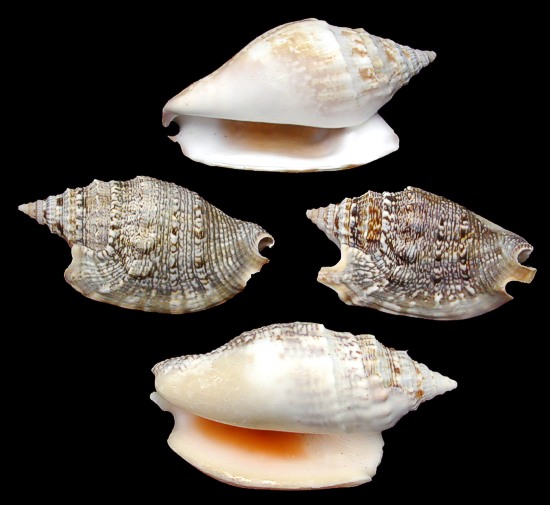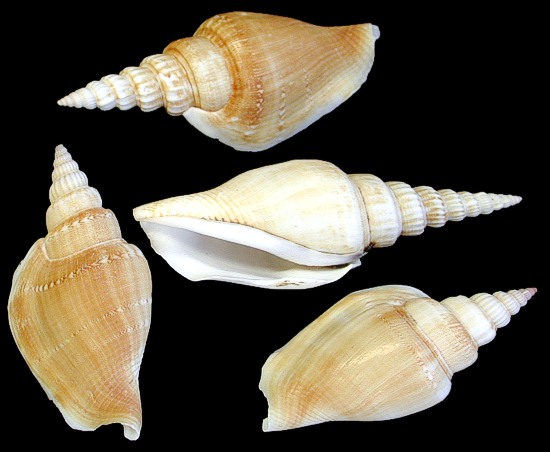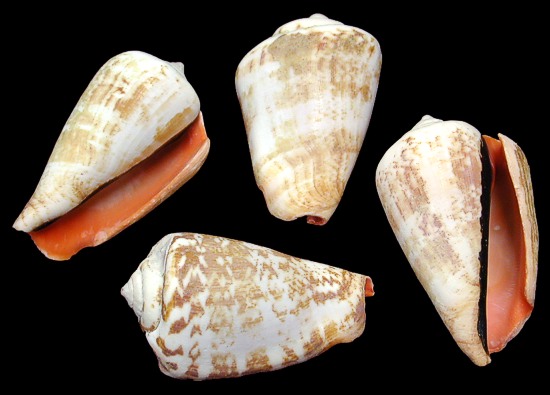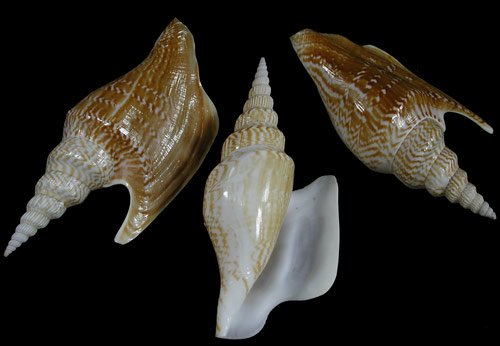As the site is updated, each listing includes the shipping cost. Some listings which I have not updated still give you calculated shipping costs based on weight and size of package. (In the sections I have updated) If you select several different listings, we will consolidate your order and charge you the actual cost of the entire package. The shipping over charge will be refunded to you, when your order is shipped.
GREAT SELECTION OF QUALITY STROMBUS SHELLS
Strombus Shells
Strombus, a genus of medium to large marine gastropod mollusks, belongs to the family Strombidae, encompassing true conchs and their close kin. Named by the Swedish naturalist Carl Linnaeus in 1758, the genus includes approximately 50 living species, ranging in size from relatively small to quite large. Of these, six species are found in the greater Caribbean region, notably the queen conch, formerly known as Strombus gigas, now typically referred to as Eustrombus gigas or Lobatus gigas, and the West Indian fighting conch, Strombus pugilis.
Globally, many large species hold significant economic value as food sources, including the endangered queen conch, which on rare occasions, may also yield a pink pearl of gem quality.
The majority of conchs are found in the Indian and Pacific Oceans. Various species of true conchs inhabit the sandy seabeds amidst sea grass beds in tropical waters, where they feed on algae and possess a claw-shaped operculum.
Similar to most shelled gastropods, conches possess shells that are constructed in a spiral manner. Typically, as with many gastropods, the growth of this spiral shell is right-handed, though it can occasionally be left-handed, albeit very rarely.
True conches are characterized by their elongated eye stalks, which are adorned with vividly ringed eyes at their tips. Their shells feature a lengthy, slender aperture and a brief siphonal canal, along with an additional indentation near the front end known as a stromboid notch. It is through this notch that one of the eye stalks extends from the shell.
The true conch possesses a foot that terminates in a pointed, sickle-shaped operculum, allowing it to burrow into the substrate as part of a distinctive "leaping" locomotion. True conches develop a flared lip on their shells, known as an alated outer lip or alation, only when they reach sexual maturity. Conches deposit their eggs in extensive strands, encased within coiled, gelatinous tubes. The genus Strombus is characterized by this leaping movement. Strombus shells feature a flared outer lip and a notch near the anterior end, known as the stromboid notch, which allows the creature to extend one of its stalked eyes.
Scientific classification
Domain: Eukaryota
Kingdom: Animalia
Phylum: Mollusca
Class: Gastropoda
Subclass: Caenogastropoda
Order: Littorinimorpha
Superfamily: Stromboidea
Family: Strombidae
Genus: Strombus
Linnaeus, 1758
Type species Strombus pugili
Linnaeus, 1758
(REF: Linnaeus C. (1758). Systema Naturae, ed. 10, 742; 1767, ed. 12, 1207.)(REF: Latiolais, J. M.; Taylor M. S.; Roy, K.; Hellberg, M. E. (2006). "A molecular phylogenetic analysis of strombid gastropod morphological diversity". Molecular Phylogenetics and Evolution 41)(REF: Kenneth R. Wye, The Encyclopedia of Shells, Londo, 2004)(REF: Strombus pugilis Linnaeus, 1758. Retrieved through: World Register of Marine Species on 27 June 2010.)(REF: Abbott, R.T. (1960). "The genus Strombus in the Indo-pacific". Indo-Pacific Mollusca 1)

Strombus Auresdiane
F1-9
A Hand Selected Strombus Auresdiane shell measuring 2 to 2.5 inches ...... .15

Strombus Vittatus
U2-9
A hand selected Strombus Vittatus conch shell measuring 2 to 3 inches...... .15

Strawberry Strombus Shell
Strawberry Strombus shells are a type of gastropod, part of the conch shell family. These shells are dense and heavy, characterized by a flaring lip and a vibrant strawberry hue on the interior. Typically, Strombus shells are found in the shallow, sandy waters of tropical seas.
S1-9
A hand selected Strawberry Strombus shell measuring 1 3/4 to 2.5 inches ...... OUT OF STOCK

Strombus Listeri
The Strombus Listeri, commonly known as Lister's Conch, has a shell that is thin, lightweight, and features a slender spire. The suture is not deep. The shell's body is smooth, boasting a curved whorl, while the apertural lip projects outward. Its outer margin runs parallel to the shell's axis, culminating in a finger-like extension. The columella is smooth and bears a slight callus. The spire's whorls are marked by pronounced vertical ribs intersected by delicate spiral threads. The conch's coloration is predominantly white with brown streaks and spots. Once deemed a rarity, these conchs inhabit the deep waters of the Indo-Pacific, spanning from the Indian Ocean to the northern coasts of Australia and New Zealand.
One hand selected Strombus Listeri (Lister's Conch) 3 inches or more.....OUT OF STOCK